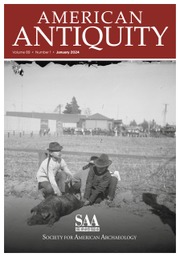Article contents
On Tool-Class Use Lives and the Formation of Archaeological Assemblages
Published online by Cambridge University Press: 20 January 2017
Abstract
The importance of tool-class use lives in the formation of archaeological assemblages is established both in theory and empirically, and accurate inference from the material record requires that use lives be measured or estimated with confidence. Unfortunately, no method of measuring use lives directly from archaeological remains has been developed. However, this important quantity may be related to elementary properties of tool classes such as size and weight, properties which are themselves directly measurable. Ethnographic data on ceramic vessels, in which use life is related to such properties, is described and analyzed. Using!Kung San and Ingalik data, a similar analysis is performed for a variety of nonceramic tools and objects, although few of the stone-tool classes common to archaeological assemblages are included. There, use life is related most strongly to manufacturing cost and curation rate, an archaeological measure of which is proposed. Neither is an elementary property, but they can be estimated accurately for many tool classes. These results are noteworthy but not definitive, and they underscore the continued value of museum ethnographic collections and ethnoarchaeological research.
Information
- Type
- Articles
- Information
- Copyright
- Copyright © Society for American Archaeology 1989
References
References Cited
- 140
- Cited by

